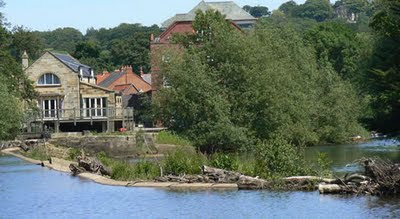
The UK construction industry is largely unaware of - or unprepared for - the opportunities which the Green Deal represents, and the Government has a long way to go to convince the public to take part, according to two new pieces of research.
A survey by the Chartered Institute of Marketing Construction Industry Group has found that only 35% of product manufacturers believe that the Green Deal - due to be implemented in under 14 months - represents an “important opportunity", and only 31% have suitable products ready to meet the demand.
Organisations surveyed - 100 manufacturers and 15 installers, who will be required to renovate the nation's 29 million homes - appear unclear as to what opportunities the Green Deal represents for them and what they should be doing about it.
Yet the Government believes that by 2017 there will be a workforce of 100,000 qualified installers. Furthermore, the products and systems supplied to home owners will need to be approved by the UK Accreditation Service in just over a year.
Moreover, these products must not disappoint the home owner once installed but must work effectively. The British Standards Institute is developing a Publicly Available Specification (PAS 2030) for this purpose.
Installers must also be fully trained and home owners must know how to take advantage of their new products in a year's time.
What motivates the public?
When questioned, suppliers said they believe that home owners' reasons for installing energy-saving services are mostly driven by financial considerations: reducing energy costs (33%), for generating extra income (22%).
They see the principal benefits being reducing energy bills (55%) and generating renewable energy at home (45%).
This is backed up by a second report, The Green Gap, by YouGov for utility and environmental consultancy Gemserv, which found that 61% of homeowners would consider installing technology such as solar PV panels, hydro power or using biomass fuel to generate their own energy.
However, over half said the technology is too dear, a third didn't know how much cash they would get back, and over half - 54% - didn't know that the Green Deal is about energy efficiency in the home.
14% thought it was to do with protecting outdoor spaces like forests, and 9% thought it was about encouraging take-up of low carbon cars.
Chris Ashworth, author of the CIMCIG report, Taking Sustainability To The Consumer, said this was a wake-up call to installers and manufacturers who seem to be failing to grasp the enormous earning potential of the Green Deal.
He said: "The main challenge for manufacturers in this sector is to understand the motivations of the UK consumer.
"As a committee, (the institute) is dedicated to helping marketers in the construction industry develop best practices and capitalise on opportunities.
"In the current market conditions it takes initiative and imagination to create sales."
The need for the right marketing
The report found a disconnect between the sales and marketing departments of manufacturers, while marketing did not seem aware of initiatives being taken by the sales departments.
The Institute recommends that marketeers change the language they use in communicating with the public. “The language of low carbon is not seen as relevant to the choices people make in their everyday lives" says the report.
It is for this reason that the Zero Carbon Hub, which supports the building of new zero carbon homes, is recommending the use of the term “a new way of living".
The Institute has recognised that the Zero Carbon debate is actually impeding progress in motivating the public.
Currently, DECC's Behavioural Insights Team is researching how people can be influenced by incentives, joint action in their communities, and by behavioural feedback.
So far, it has found that homeowners need simple, clear and powerful information to help them make decisions.
The barriers for them include: a lack of understanding, lack of awareness, a conservative attitude to change, mistrust of installers, and cost.
The CIMCIG report breaks down the public into different segments who need to be approached in different ways: 'positive greens' make up 80% of the population; 'waste watchers' make up another 12%; ‘concern consumers’ make up 14%; ‘sideline supporters’ are 14%; ‘cautious participants’ are 14%; ‘stalled starters’ are 10%; and the ‘honestly disengaged' make up the last 18%.
The report concludes by saying the entire construction industry must work together - trade associations, manufacturers, contractors, wholesalers and installers - in an effective supply chain, in contrast with others such as energy companies and major retailers who have recognised the opportunity and are starting to act. Otherwise, traditional retailers risk being marginalised as the Green Deal becomes mainstream.
Installers of solar electricity systems for the Feed-In Tariffs have already shown how to take advantage of government support. For example, the Green Home Company has secured private finance to allow it to install free solar photovoltaic systems in the Kent area.
One positive initiative is where energy companies have been partnering with merchants to make it easier to buy insulation at subsidised prices, by creating online calculators so that homeowners can work out how many rolls of insulation to buy, and by offering free delivery.
The Energy Saving trust's website Think insulation is also a useful one-stop shop for consumers.
To help stakeholders DECC has set up four forums through which it is developing support for accreditation, capacity and innovation, and how to maximise energy efficiency.





